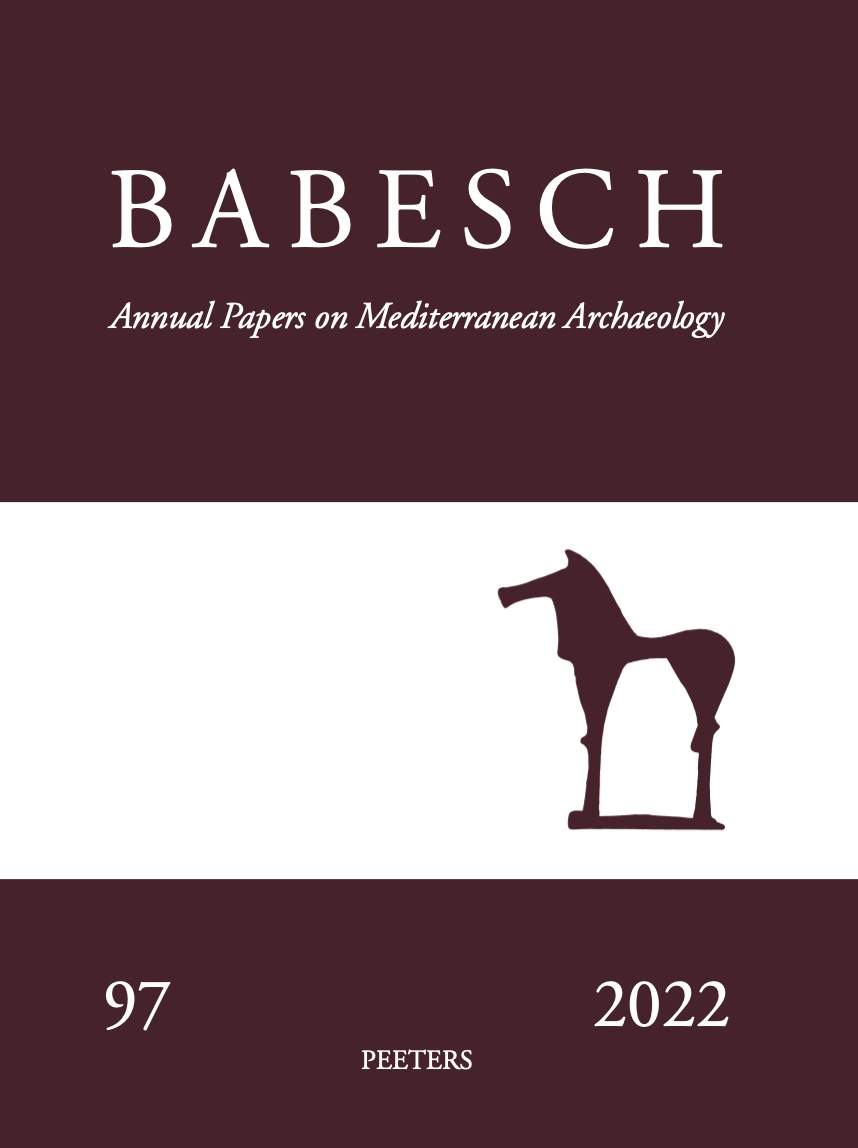 previous article in this issue previous article in this issue | next article in this issue  |

Preview first page |
Document Details : Title: Carthage Bir Massouda Subtitle: Preliminary report on the fist bilateral excavations of Ghent University and the Institut National du Patrimoine (2002-2003) Author(s): DOCTER, Roald F. , CHELBI, Fethi , TELMINI, Boutheina M. Journal: BABESCH Volume: 78 Date: 2003 Pages: 43-71 DOI: 10.2143/BAB.78.0.503921 Abstract : Rescue excavations on the Bir Massouda site have given important evidence for the urban development of Punic Carthage. The position of a city boundary in the form of ‘casemate’-walls was established. Outside this boundary, an 8th century BC cremation necropolis (the earliest of Carthage) was succeeded by metal working quarters after the mid-7th century BC. In the late 5th century BC, this part of the city was reshaped into residential quarters. A selection of finds of the Punic period both show the range of materials yielded by these excavations and proof the advanced technological skills of the Carthaginian iron workers. |
|


